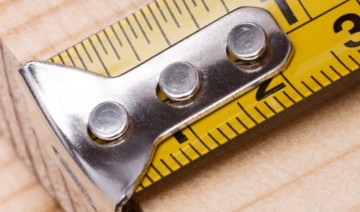
DIY: Nominal Lumber Size Versus Actual Lumber Size
Every so often a homeowner tackling a new project will reach out to ask why their lumber doesn’t fit the connector. We sympathize. Lumber sizes can be confusing, especially when someone is first getting started with DIY woodworking. Nearly every single time this question comes up, it comes down to “nominal” dimensions of the purchased lumber.
What is meant by nominal lumber size?
The nominal size is determined before the lumber is surfaced, milled, or planed smooth. This finishing process gives lumber a uniform profile, so there’s consistency when you go to the lumberyard. The finished size is the “actual lumber size” (sometimes referred to as the “dressed lumber size”).
Why isn’t a 2×4 actually a 2×4?
A 2×4 hasn’t measured two inches by four inches for several decades. The lack of consistent sizing became an issue in the early part of the 20th century for stick–frame construction. So, in 1964, the American Lumber Congress addressed the lumber dimension issues by setting industry requirements for “size standards, maximum moisture content, and nomenclature.”
What is the actual size of a 2×4?
The actual size of a 2×4 is 1½“ x 3½“.
Common lumber dimensions:
| Nominal Size | Actual Size |
| 1×2 | 3/4″ × 1½“ |
| 1×3 | 3/4″ × 2½“ |
| 1×4 | 3/4″ × 3½“ |
| 1×6 | 3/4″ × 5½“ |
| 1×8 | 3/4″ × 7¼“ |
| 1×10 | 3/4″ × 9¼“ |
| 1×12 | 3/4″ × 11¼“ |
| 2×2 | 1½” × 1½“ |
| 2×3 | 1½” × 2½“ |
| 2×4 | 1½” × 3½“ |
| 2×6 | 1½” × 5½“ |
| 2×8 | 1½” × 7¼“ |
| 2×10 | 1½” × 9¼“ |
| 2×12 | 1½” × 11¼“ |
| 4×4 | 3½” × 3½“ |
| 4×6 | 3½” × 5½“ |
| 6×6 | 5½” × 5½“ |
Need another explanation? David Lynch took a shot at articulating the issue of lumber dimensions in Twin Peaks:
